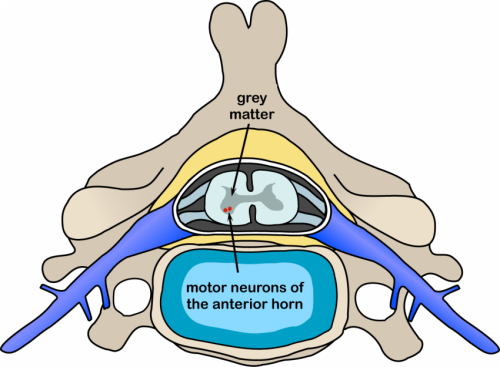Researchers reveal process behind harmful glial cell change in motor neurone disease

Scientists at the Francis Crick Institute and UCL have identified the trigger of a key cellular change in amyotrophic lateral sclerosis (ALS), a type of motor neurone disease. The findings could help develop new treatments for many neurological diseases with the same change, including Parkinson's and Alzheimer's.
When the nervous system is injured, diseased or infected, star-shaped cells, called astrocytes, undergo 'reactive' changes in their behaviour. Whilst some of these reactive astrocytes become protective, others become harmful and damage surrounding motor neurons.
Reactive astrocytes are observed in various neurodegenerative diseases including ALS, but there is a lack of understanding about what causes astrocytes to undergo this change.
In their research, published in Nucleic Acids Research today (4th March), the scientists compared ALS-diseased astrocytes with healthy astrocytes to uncover how the diseased cells become reactive. These cells were grown from human induced pluripotent stem cells—master stem cells—which can be directed to differentiate into any cell in the human body.
They found that key to the astrocyte change in diseased cells is an increase in the removal of introns (non-coding sections of genetic information) from RNA in a process called splicing. The team identified that in healthy astrocytes there are some RNAs that normally retain certain introns however in diseased cells these particular introns are spliced out.
This has dramatic consequences on the cell's actions as when these introns are cut out of RNA, the remaining exons (coding sections of genetic information) are used as a recipe for building proteins and some of these proteins play a role in the astrocytes changing.
Rickie Patani, senior author, group leader at the Crick, Professor at UCL's Queen Square Institute of Neurology and a consultant neurologist at the National Hospital for Neurology and Neurosurgery, says: "Understanding how astrocytes undergo this transformation is a really exciting step forward. It brings us closer to potentially being able to control and prevent astrocytes from becoming harmfully reactive. While there's still a long way to go, we're hopeful that developing such a treatment is possible and that it could even potentially be used across all neurological conditions in which an increase in reactive astrocytes is also documented, including Parkinson's and Alzheimer's."
ALS is a rapidly progressing degenerative disease. Patients commonly suffer loss of movement, speech and eventually the ability to breathe, and most people only live 3 to 5 years after diagnosis. There are currently no treatments that can meaningfully alter the prognosis.
But understanding key cellular changes associated with ALS could help develop new therapies to slow disease progression.
Oliver Ziff, lead author and clinical fellow at the Crick, UCL's Queen Square Institute of Neurology and a neurology registrar at the National Hospital for Neurology and Neurosurgery, says: "Our group have previously shown that splicing is decreased in ALS motor neurons, so when we found the opposite in ALS astrocytes we were intrigued. In fact, increased splicing is what we find in other immune cells when they become activated or angry. This raises the possibility that ALS astrocytes inflict a toxic immune insult on the nervous system and opens new therapeutic avenues for treating ALS."
The researchers will continue this work to further understand the molecular mechanisms involved when astrocytes become reactive with the ambition of developing an intervention that could be used by doctors to slow disease progression.
More information: Nucleic Acids Research (2021). DOI: 10.1093/nar/gkab115





















